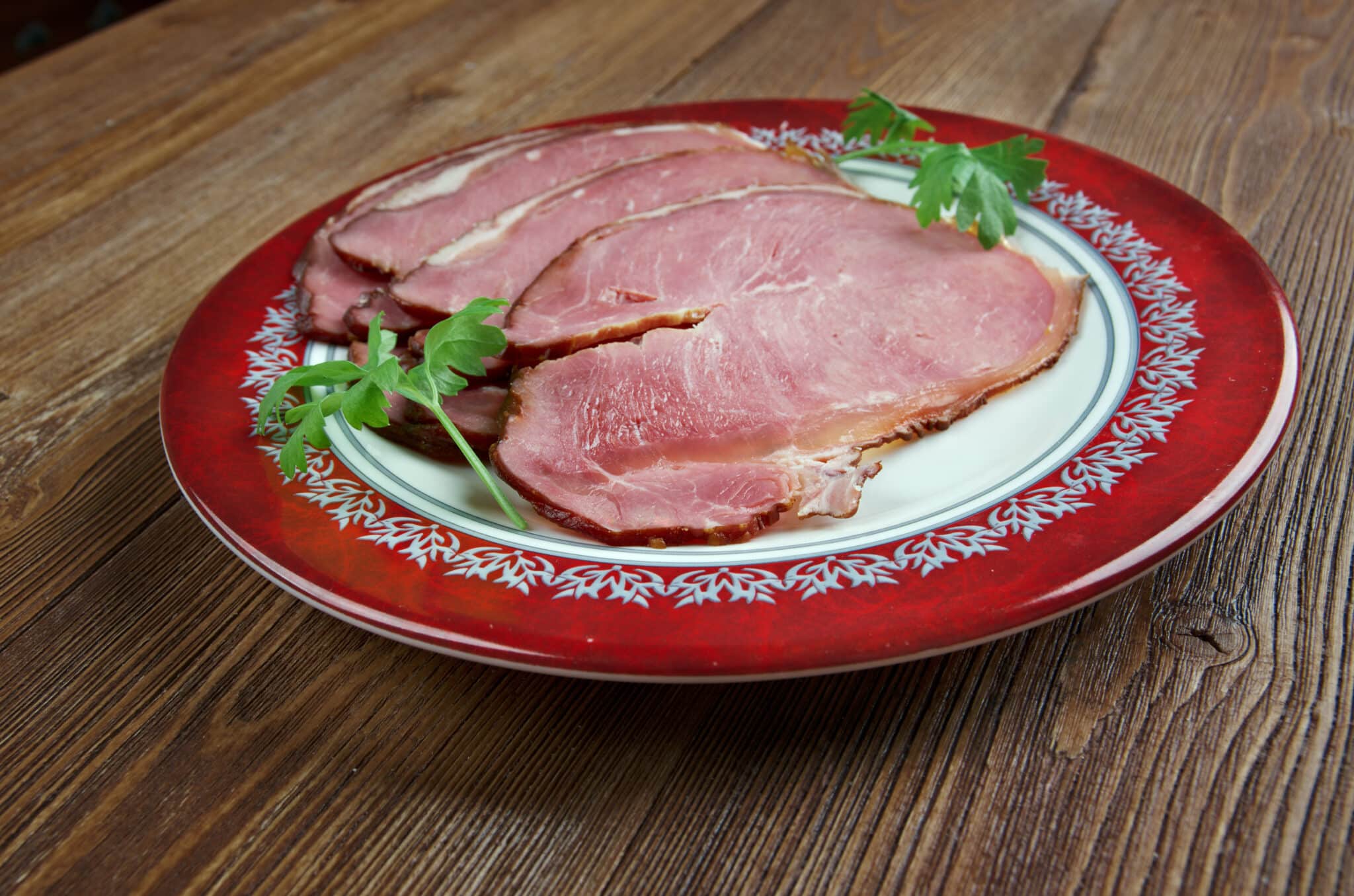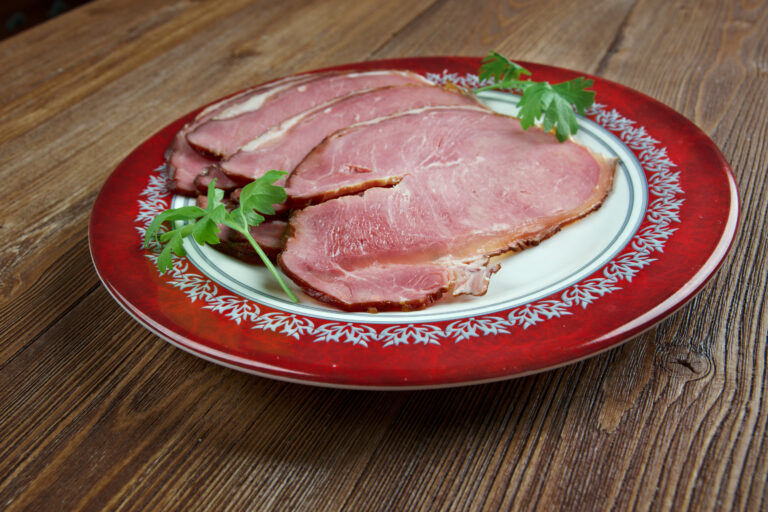
Hangikjot, a cherished dish in Iceland, is more than just food. It’s a symbol of tradition and national pride. This smoked lamb or mutton dish has been part of Icelandic cuisine for centuries, offering a taste of the country’s history and culture.
The story of Hangikjot begins with the arrival of Norse settlers in Iceland around the 9th century. These early inhabitants brought with them sheep, an animal well-suited to Iceland’s harsh climate and rugged terrain. Over time, smoking meat became a popular method for preserving food during the long winter months.
Our team at Remitly created this guide as part of our series that celebrates the culinary traditions of our global customers.
The Origin of Hangikjot
The name “Hangikjot” translates to “hung meat,” referring to the traditional method of smoking it by hanging it over a fire. This practice dates back to Viking times when resources were scarce, and preservation methods were crucial for survival. The smoke not only preserved the meat but also imparted a unique flavor that is still appreciated today.
While modern technology has introduced new ways to smoke and preserve meat, many Icelandic families continue to use traditional methods when preparing Hangikjot. It’s not just about maintaining cultural heritage; it’s also about preserving that distinctive taste that can’t be replicated by modern techniques.
Traditional Preparation Methods
Preparing Hangikjot involves several steps. First, the meat—usually lamb or mutton—is cured with salt. After curing, it’s hung up in a smokehouse where birch wood or other fuelis burned below it. The smoke infuses into the meat over several days or even weeks.
Once smoked adequately, the Hangikjot is boiled until tender and ready to serve. Some people add spices like cloves or bay leaves during boiling for extra flavoring. Despite its lengthy preparation process, making Hangikjot isn’t complicated—it just requires patience and respect for tradition.
Ingredients Used in Hangikjot
The primary ingredient in Hangikjot is lamb or mutton. Icelandic sheep are free-range, grazing on a diet of grass, herbs, and berries. This natural diet contributes to the meat’s unique flavor profile.
In addition to the meat, other ingredients used in Hangikjot include salt for curing and birch wood or dried sheep dung for smoking. Some people also use spices like cloves or bay leaves during boiling. However, the simplicity of ingredients allows the smoked flavor to shine through.
Recipe for Hangikjot
While the traditional Icelandic smoking method may not be readily available everywhere, you can use a regular smoker or even your oven. Here’s a simplified recipe to help you get started.
Ingredients
- 1 whole leg of lamb or mutton
- Salt for curing (approximately 1 cup)
- Wood chips for smoking (preferably birch, but any type will do)
- Optional: cloves or bay leaves for flavoring during boiling
Instructions
- Begin by curing the meat. Rub salt all over the leg of lamb, ensuring it’s well coated. Place it in a large container and refrigerate for about a week, turning it daily to ensure even curing.
- After curing, rinse off the excess salt under cold water and pat dry with paper towels.
- Prepare your smoker according to its instructions and add your wood chips. If using an oven, set it to its lowest temperature and place a pan of wood chips on the bottom rack.
- Hang or place your cured meat in the smoker or oven. Smoke for several hours until the meat has taken on a deep brown color.
- Once smoked, transfer the Hangikjot to a large pot filled with water. Add optional spices like cloves or bay leaves if desired.
- Bring to boil then reduce heat and simmer until tender—this could take anywhere from 2 to 4 hours depending on size of meat.
- Once cooked through and tender, remove from heat and let cool slightly before slicing thinly against grain.
- Serve with traditional sides like boiled potatoes, green peas, red cabbage, béchamel sauce, and pickled red beetroot.
Variations of Hangikjot Across Iceland
While the basic recipe for Hangikjot remains consistent across Iceland, regional variations do exist. Some families may use different types of wood for smoking or add their own blend of spices during boiling.
Despite these variations, what remains constant is the importance placed on using high-quality local ingredients and adhering to traditional preparation methods. It’s this commitment to authenticity that makes each version of Hangikjot special in its own way.
Serving and Eating Etiquette
Hangikjot is typically served thinly sliced with sides like boiled potatoes, green peas, red cabbage, and béchamel sauce—a creamy white sauce made from butter, flour, and milk. A popular condiment is pickled red beetroot which adds a sweet-tangy contrast to the smoky meat.
When eating Hangikjot at a formal gathering or holiday meal, it’s customary to wait until everyone has been served before starting to eat. It’s also common practice to compliment the cook on their hard work—after all, preparing Hangikjot is no small feat!
Hangikjot holds a special place in Icelandic celebrations. It’s often served during Christmas as part of a festive feast known as “Jolabord.” Other occasions where you might find Hangikjot include New Year’s Eve dinners and Thorrablot, a mid-winter festival.
While Hangikjot is associated with special occasions, it’s not reserved solely for them. Many Icelanders enjoy this traditional dish throughout the year, savoring its smoky flavor as a comforting reminder of home.
A Glimpse into Icelandic Cuisine
Icelandic cuisine is as diverse as its landscape—from hearty stews that warm you up during the cold winter months, to refreshing dairy products enjoyed year-round. Here’s a brief overview of some traditional Icelandic dishes you might want to explore.
Plokkfiskur
Plokkfiskur, or “plucked fish,” is a comforting stew made from boiled fish—usually cod or haddock—and potatoes. The ingredients are mashed together and mixed with a white sauce, often flavored with onions and spices. It’s a simple dish that showcases Iceland’s abundant seafood.
Skyr
Skyr is a staple in Icelandic diets. This cultured dairy product is similar to yogurt but thicker and creamier. It’s often enjoyed at breakfast or as a snack, served with milk and sugar or topped with fresh berries.
Kleinur
Kleinur are Icelandic doughnuts—twisted strips of dough that are deep-fried until golden brown. They’re slightly sweet, with a hint of cardamom flavor, and make for an excellent treat alongside coffee or tea.
Hakarl
Hakarl is perhaps one of the most notorious dishes in Icelandic cuisine. It’s made from fermented shark meat that has been hung to dry for several months. The taste is strong and distinctive—an acquired taste for many—but it offers insight into the resourcefulness of traditional Icelandic food preservation methods.
Exploring Icelandic cuisine provides not only an opportunity to try new flavors but also to learn about the country’s history and culture, and experience Iceland like a local.
Visit the homepage, download our app, or check out our Help Center to get started.
